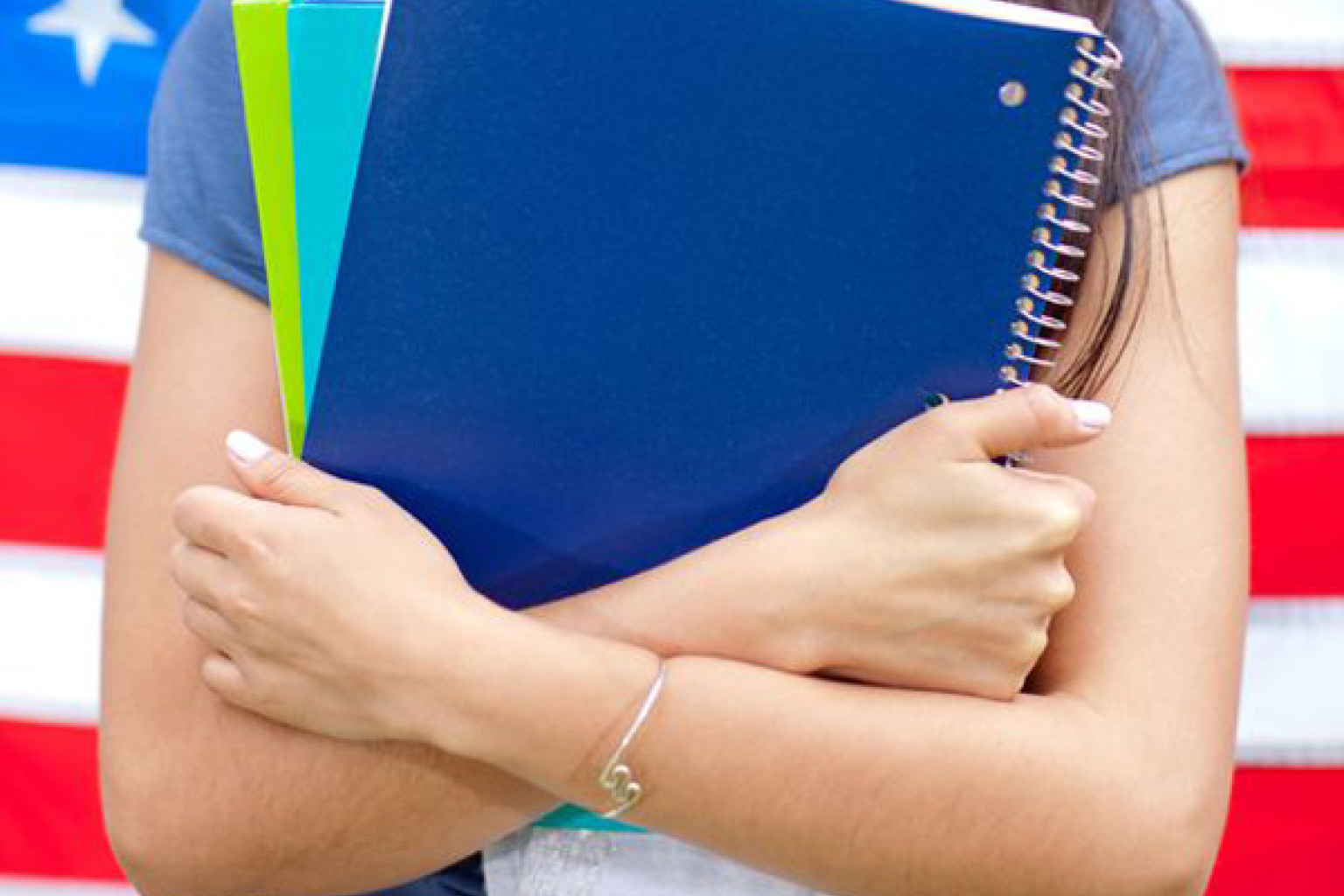M-1 visas allow students to attend an accredited non-academic or vocational educational institution in the United States. For example, the M visa is required if attending flight school in the United States. If you are seeking in-service education or training in the United States, we are happy to assist you with your M-1 visa application!
M-1 visas entitle the holder to stay in the USA as part of a non-academic study program, for example, if not studying at a college or university. Thus, anyone who is pursuing a part-time education or training program, or who wants to take evening classes, requires a visa of the M-1 category.
Attention: M-1 visas do not entitle the holder to participate in language courses. For this could possibly be a F-1 visa come into question.

Applying for an M-1 visa is subject to several conditions.
1. SEVIS registration of the educational institution
SEVIS stands for Student and Exchange Visitor Information System. SEVIS is a US government online database that allows the U.S. Department of Homeland Security, or DHS, and the U.S. Department of State, or DOS, to view the records of all M-1 visa holders residing in the United States.
2. Issuance of the I-20 form
The SEVIS registration is required to issue the I-20 form, which must be presented at the US consulate for M-1 visa applications. Please note that not all schools are authorized to issue the I-20 form. Therefore, it is necessary to inquire in advance whether the educational institution in question has a SEVIS registration. This can be found on the official website of the US authorities.
3. Securing the financing
M-1 applicants must be able to provide evidence of funding for education and living expenses through their own resources or through scholarships.
4. Proof of the intention to return
M-1 applicants must provide proof of permanent residence in the home country and other proof of intent to return, if applicable.
If you are unsure whether you can apply for the M-1 visa, get an assessment from our visa experts.

1.Timely application
Applications for M-1 visas can be filed a maximum of 365 days before the start of the training. However, since the regular application process can involve long waiting and processing times, it is recommended to apply for the M-1 visa as early as possible.
2. Personal interview appointment
Applicants must usually appear in person at an interview appointment at one of the responsible US consulates / US embassy. Here, among other things, the following things will be asked:
The application is usually made at the US consulate / US embassy in the country where the applicant's residence is located.
Note: The requirement to appear in person at the US consulate / US embassy has been suspended for M-1 applicants under certain conditions. Please check in each individual case whether you can make use of this special regulation.
3. Approval of the application
M-1 visa applicants usually find out on the day of the interview whether the visa will be approved. After approval, the passport with the M-1 visa is usually delivered to the respective applicant after five to ten working days.
How high the costs for US visas are depends on which visa is applied for. Generally speaking, the more application steps are required and the more US authorities are involved, the more expensive the visa application will be. The application fees for US visas can therefore vary greatly.
Anyone applying for a visa for the USA at a US consulate or embassy must pay the following fees:

Additional costs are incurred for application procedures via the U.S. Citizenship and Immigration Services (USCIS), such as applications for US work visas.
You can find more information about the different visa fees, other possible costs and the current payment methods on our fees page.
The M-1 visa is usually issued for one year. Residency status in the US is determined by the duration of the education or training as noted on the I-20 form. If the training takes longer than anticipated, an extension of up to 12 months can be requested from the respective educational institution. In addition, it is possible to enter the US with the M-1 visa as early as 30 days before the start of the training and to remain in the US for up to a maximum of 30 days after completion of the training.
Spouses and unmarried children under the age of 21 may obtain a derivative M-2 visa for the same period as the principal applicant. If the children reach the U.S. age of majority, they must change their nonimmigrant status or leave the country. Family members are not permitted to work. Applying for a general work permit (Employment Authorization Document, EAD) is therefore not possible under the M-2 status. However, M-2 visa holders can attend a public/private educational institution (kindergarten to high school).
If a higher educational institution (e.g. university) is to be attended, a stand-alone F-1 visa must be applied for.
The fees for applying for a visa vary considerably depending on the category and may regularly increase or decrease, also as a result of exchange rate fluctuations. Therefore, every applicant should inform himself about the current fees before applying.
The application for a U.S. visa must be made through the official U.S. authorities, e.g. the U.S. consulates and U.S. embassies. The actual visa application is placed online, but almost every applicant must go to the consulate in person for a visa interview. With some work visas, it is sometimes necessary to send extensive files by mail to the U.S. authorities in the USA prior to the consular application procedure.
We advise and support companies and private individuals in all matters relating to visa applications. Read more about the requirements, duration and costs of a visa application.
Some universities or colleges in the U.S. require their students to present their Social Security Number. However, normally the number is not issued to persons who are temporarily in the United States on an F-1, J-1 or M-1 visa. In this case, the universities should be able to assign a different identification number to the foreign students concerned.
If you want to take up employment that is permitted under the respective student visa, you can apply for a Social Security Number.
No. M-1 visas only entitle the holder to attend a non-academic educational institution. Study programs such as in-service training or evening classes are considered non-academic programs.
Yes an extension or new application for the M-1 visa is possible. If the training takes longer than expected, an extension of up to 12 months can be applied for at the respective educational institution.
No, Global Entry is not usable with all US visas without exception. If you are a holder:in one of the following visas, then you are excluded from Global Entry:
Spouses and unmarried children under the age of 21 will be issued a derived J-2 visa for the same period as the principal applicant and may travel to the United States on that visa.
The U.S. period of stay is based on the duration of further education or training noted in the I-20, but generally may not exceed one year.However, M-1 visa holders are allowed to enter the U.S. as early as 30 days prior to the start of the program.
Subsequent practical training
Some M-1 programs include a practical training program. The time spent in the practical training program does not count toward the one-year residency requirement. One month of practical training per completedfour-monthContinuation or training unit is allowed, up to a maximum of six months.
Extensions of further education or training possible if necessary
The holder of an M-1 visa may extend the duration of his/her further education or training up to a total period of three years. However, extensions are only possible if:
Aside from the Form I-20, M-1 visa applicants must also provide evidence of the following:
M-1 visa holders are not allowed to engage in any professional activities. The exception to this rule is temporary work as part of an internship. Accompanying family members who receive an M-2 visa are also not allowed to work. However, M-2 spouses and children may be allowed to study (see "What visa do accompanying family members receive on the M-1 visa?")
Accompanying spouses and unmarried children up to age 21 will be granted derivative status upon application, and thus an M-2 visa. Children who turn 21 or marry while in the U.S. must change their nonimmigrant status or leave the country.
Work not allowed
However, with this visa, the spouses and children are allowed tonotpermitted to work, i.e. the acquisition of a General Work Permit (Employment Authorization Document, EAD) in the USA is excluded (unlike other categories such asL-1orE-1/E-2).
Study only possible to a limited extent
Children may attend an "elementary" or "secondary" school(Kindergarten to High School). If a higher educational institution (e.g. university) is to be attended, a separate F-1 visa must be applied for.
Spouses may only:
If the spouse wishes to study full-time, he or she must apply for an F-1 visa.
The M-1 visa permits attendance at a vocational or non-academic educational institution in the U.S. (e.g., a flight school). An M-1 visa does not permit attendance at a language school. And the educational institution must be approved by the Student and Exchange Visitor Program (SEVP) must be registered.
Yes, the I-20 form is also mandatory to apply for the M visa. The I-20 form must be issued by the respective educational institution in the U.S. It should be noted that not all schools are authorized to issue the I-20 form. Therefore, it must be clarified in advance whether the targeted educational institution has this authorization. You can read about this at: http://studyinthestates.dhs.gov/school-search
As a rule, applicants find out on the day of their interview whether the visa will be granted or not.
In certain cases, the visa applicant receives a letter of refusal from the consulate after a certain processing time. Incidentally, no reasons need to be given for a refusal. The reasons for this can be manifold and range - depending on the visa category - from the assumption of an immigration intention, to the presumption of illegal employment, to insufficient application documentation.
Once this has happened, a new visa can usually only be (successfully) applied for after several months or even years. Theoretically, there is no waiting period for the applicant until the next submission. However, experience shows that without a blatant improvement in the requirements of the respective visa category (e.g. proof of the intention to return to the home country, financial means, proof of specialized professional knowledge, etc.), a new application does not appear to make much sense.
We and our partners use cookies to store and retrieve personally identifiable information, such as browsing data, to provide and personalize content and advertising, and to analyze website usage and improve the user experience. You can learn more about the purposes for which we and our partners use cookies by clicking on the "Cookie Settings" button below. All settings can also be changed here. Subsequently, you can reconsider your cookie selection or revoke your consent at any time by clicking on the cookie settings link in the footer of our website. Please note that blocking some cookie types may have our ability to provide content tailored to your interests or may limit the availability of some website features.
By clicking "Accept All Cookies" you consent to our use and sharing of your information with our partners.